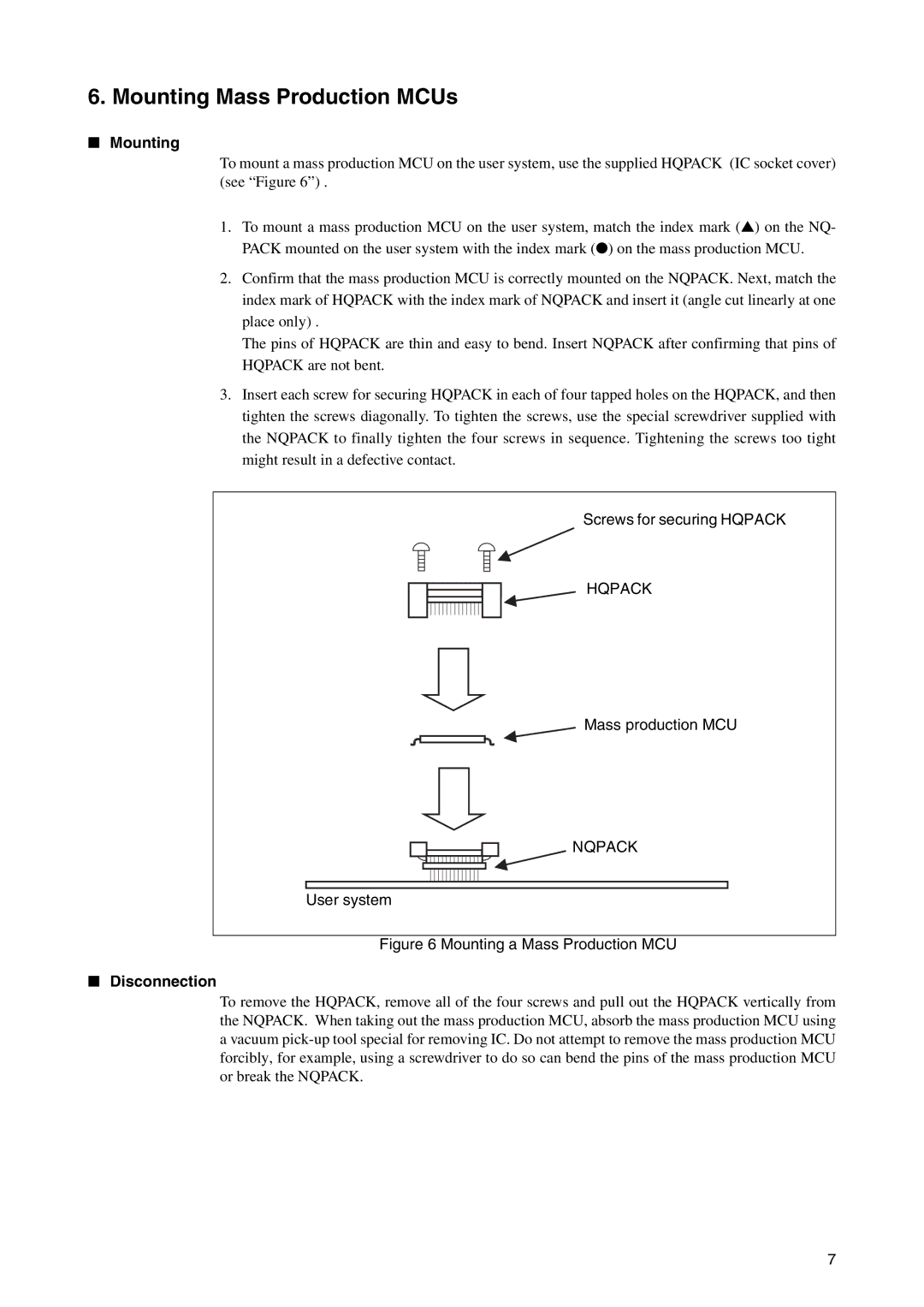LQFP-52P specifications
Fujitsu LQFP-52P is a highly versatile and compact microcontroller well-suited for a wide range of applications, including automotive, industrial automation, and consumer electronics. With its advanced features and technology, the LQFP-52P stands out in the microcontroller market, making it a popular choice among engineers and designers looking to optimize performance while maintaining efficiency.One of the notable characteristics of the LQFP-52P is its 52-pin Quad Flat Package (QFP) design. This package type is recognized for its low profile and high pin count, facilitating ease of integration into densely packed circuits. The LQFP configuration contributes to the microcontroller's ability to support various peripheral interfaces and functions without occupying excessive board space.
At the heart of the LQFP-52P is a powerful microcontroller core that typically operates at high clock speeds, ensuring quick processing and real-time performance. Its architecture includes a rich instruction set that allows for efficient code execution, which is crucial in high-demand applications. The microcontroller may also feature multiple I/O ports, enabling a variety of input and output functions, making it adaptable for various control tasks.
Incorporating advanced technologies, the LQFP-52P often integrates various peripherals such as analog-to-digital converters (ADCs), timers, PWM generators, and communication interfaces like SPI, I2C, and UART. This integrated approach not only reduces component count but also enhances system reliability and simplifies design processes.
Another essential functionality of the LQFP-52P is its low power consumption, making it ideal for battery-operated devices. The microcontroller includes various power-saving modes that extend battery life and reduce energy expenditure during inactive periods. This feature is particularly advantageous in applications where power efficiency is critical.
Furthermore, the LQFP-52P typically comes with extensive development support, including software libraries and development kits, facilitating ease of programming and implementation. This support enables developers to quickly prototype and deploy their applications, accelerating time-to-market.
In summary, the Fujitsu LQFP-52P microcontroller combines a compact design with powerful performance and advanced integrated technologies. Its rich features set, low power consumption, and robust support make it an excellent choice for various applications, paving the way for innovative designs in modern electronic devices.

